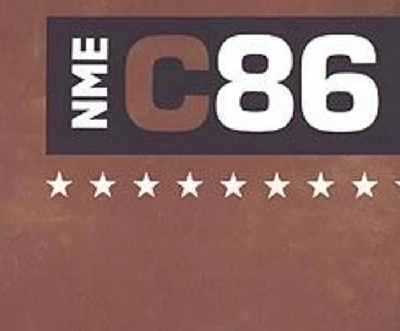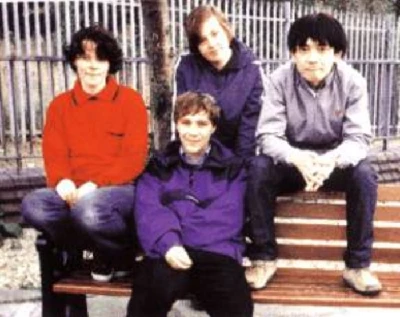Miscellaneous
-
A History and Personal Perspective Part 1
published: 16 /
1 /
2002

When reading about your indie-pop favourites, you have probably quite often stumbled across the term"C86". And maybe you have wondered what it means. Is it a cassette that is 86 minutes long? Is it a guitar model? Is it a drum machine?
Article
When reading about your indie-pop favourites, you have probably quite often stumbled across the term"C86". And maybe you have wondered what it means. Is it a cassette that is 86 minutes long? Is it a guitar model? Is it a drum machine?
In this two-piece article, I will try to straighten things out for you.
The term C86 comes from a cassette-only compilation which was compiled by the British music magazine New Musical Express (commonly known as the NME) in 1986. The idea of this tape was to document the mood of the British indie scene at the time, and it featured bands like The Wedding Present, The Pastels, Primal Scream (before they discovered The Rolling Stones and dance music), McCarthy, The Soup Dragons (who later became part of the Madchester-scene and had a hit with 'I'm Free') and The Close Lobsters (whose contribution 'Firestation Towers' gave the great German record label of today its name). To accompany the tape, which was available via mail-order only, five concerts were held at London's Institute Of Contemporary Arts in the summer of 1986. The tape was later reissued by Rough Trade on LP for all those who didn't get a copy of the original issue.
The fact that this little compilation would have such an impact on the indie-pop scene all over the world must have come as a big surprise to its compilers. In fact the term C86 should have been used a little more carefully, as most of the bands that formed in the UK in the late 80's playing guitarbased indie-pop automatically got placed in the C86 category, and sometimes this proved to be very wrong.
WHAT WAS TYPICAL OF C86 BANDS?
What in their sound made them earn a place in this prestigious club?
To explain their sound, I will describe one of the bands that represent the C86 movement well ; Talulah Gosh (whose members Amelia and Mathew Fletcher and Robert Pursey would go on to form Heavenly, another one of those classic C86 bands, after their split in 1988). Their attitude was similar to a punk rock band, but the sound wasn't so loud. They played jangly guitars (preferably Rickenbackers to get a Byrds-ian jingle-jangle sound) and had very melodic songs and a female vocalist singing about boys meeting girls.
This description could easily be aplied to most of the other C86-bands, but by no means all. One of the things that differed between these bands was whether they used distorted guitars or not . Some used them a lot (The Pastels etc.) and some never used them at all (early Primal Scream, McCarthy etc.). The non-use of the distortion pedal made them look soft to the other bands, and the name twee-pop was invented to give us yet another category to put these bands in.
SARAH RECORDS
If you have heard of C86, you will have probably heard of Sarah Records. It was founded by Matt Haynes and Clare Wadd as an off-shoot to Haynes' fanzine 'Are You Scared To Get Happy?' in 1987. Their policy was to release 7" singles only, as a kind of protest against the growing formats of 12" and CD, though later they would end up releasing records on both these formats themselves. Sarah's biggest asset, and a band, that represented the typical "Sarah sound" were the Field Mice. They released the classic 'Emma's House' on Sarah in 1988, and continued to release their records on the label until they split up in 1991. Later, their leader Bobby Wratten would form Trembling Blue Stars, the first band that got signed to Shinkansen, the label started by Matt Haynes after Sarah Records folded in the mid-90's. Other important bands on Sarah Records were Another Sunny Day, The Sea Urchins (who released the first ever Sarah single, the wonderful 'Pristine Christine' in 1987), Even As We Speak, The Orchids, The Wake and St Christopher. The label is nowadays a cult label, and especially its earlier releases are now selling at often ridiculous prices.
WHO TO LOVE
The bands in the C86 genre were basically influenced by classic, melodic pop music from any era, but some of the most important influences were The Go-Betweens, Aztec Camera, The Smiths and Orange Juice (as you see, the Scottish Postcard label were quite influential). But there were a lot of individuals that were important too. Among these we find the forementioned label/fanzine-owners Matt Haynes and Clare Wadd, the also mentioned Mathew Fletcher (the Talulah Gosh/Heavenly drummer who commited suicide in 1996) and Ian McNay (founder of Cherry Red Records) . Creation boss Alan McGee could be counted as a C86-icon if you look at the early days of his label (with brilliant bands such as Felt, The Razorcuts, Biff! Bang! Pow! and The Bodines), but as he also been responsible for crimes such as Oasis and the later Primal Scream, I think we have to count him out.
C86 - MORE THAN JUST JANGLY MUSIC
But C86 wasn't just the music. It became a subculture and spoke to alienated teenagers that were bored stiff with the mainstream culture. The C86 culture hooked them on DIY-lo-fi-sensibilities, an almost asexual, childlike affection to sixties pop and girlgroups, 7" singles, bedsit socialism and a romantic, pastoral, holding-hands vision of England. The music genre twee-pop has also been called anorak pop, mostly because the anorak was a popular choice of jacket among these C86-hooked teenagers.
Picture Gallery:-


